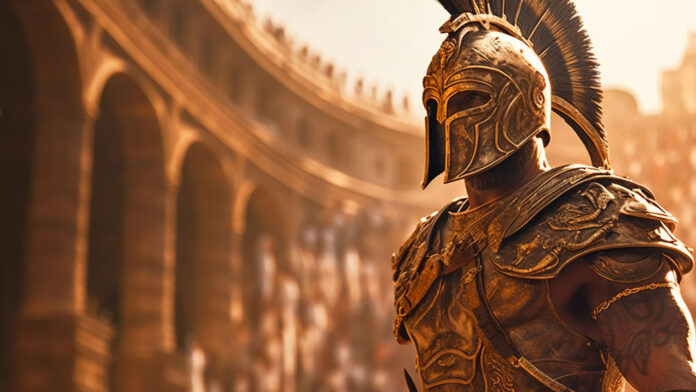Embark on a journey through time as we unveil fascinating facts about gladiators, the legendary warriors of Ancient Rome. This comprehensive exploration will delve into their diverse origins, the intricacies of their training, and the breathtaking spectacles that unfolded in the iconic Colosseum. Join us as we separate myth from reality and uncover the lesser-known truths that define the awe-inspiring world of gladiators.
Facts About the Origins of Gladiators
Ritual Beginnings: Contrary to popular belief, gladiatorial combat didn’t start as a mere spectacle. It originated in ancient funerary rituals, where armed combat was performed to honor the deceased, gradually evolving into the grand spectacles witnessed in the Colosseum.
Diverse Backgrounds: Beyond being slaves or prisoners of war, gladiators hailed from diverse backgrounds. Some willingly chose the life of a gladiator for the promise of fame and fortune, contributing to the rich tapestry of these ancient warriors.
Gladiator Schools: Forging Warriors through Rigorous Training
The Ludi and Training Regimen: Gladiator schools, known as ludi, were the crucible where warriors were forged. The training regimen was intense, encompassing combat drills, weapon mastery, and physical conditioning. This immersive preparation set the stage for the epic battles to come.
Specialized Gladiator Types: Gladiators were not a one-size-fits-all group. They were categorized into specialized types, each with unique weaponry and combat styles. From heavily armored secutors to nimble retiarii armed with tridents and nets, these distinctions added flair to the arena.
Gladiatorial Combat: Myths vs. Reality
Choreographed Spectacle: While gladiator battles were indeed brutal, they were often choreographed performances. Combatants showcased their skills and bravery in a carefully orchestrated manner, aiming to entertain the audience with a captivating blend of drama and athleticism.
Not Always to the Death: Contrary to popular belief, not all gladiator battles ended in death. Surrender or non-lethal blows were acceptable outcomes, and some gladiators even earned their freedom through distinguished service in the arena.
The Colosseum: A Grand Stage for Gladiatorial Spectacles
Architectural Marvel: The Colosseum, a monumental amphitheater, served as the grand stage for gladiatorial contests. Its architectural brilliance allowed tens of thousands to witness the thrilling battles that unfolded within its iconic walls.
Diverse Arena Events: Gladiatorial contests were just one aspect of the Colosseum’s entertainment repertoire. The arena also hosted animal hunts, mock sea battles, and executions, showcasing the versatility of this ancient architectural wonder.
Famous Gladiators: Real Heroes Beyond the Arena
Spartacus: A Leader and Gladiator: Spartacus, one of the most famous gladiators, rose to prominence as the leader of a slave revolt against Rome. His story transcends the arena, symbolizing resistance and the fight for freedom.
Commodus: Emperor in the Arena: Roman Emperor Commodus, known for his eccentricities, took his fascination with gladiators to another level by participating in the arena himself. This unconventional act blurred the lines between ruler and entertainer.
The End of Gladiatorial Games: Shifting Values and Decline
Changing Social Attitudes: The decline of gladiatorial games in the 5th century CE can be attributed to changing social values. As Christianity gained influence, attitudes toward the spectacle shifted, leading to a gradual end of the grand gladiatorial era.
Legacy in Popular Culture: Despite their end in antiquity, gladiators continue to capture modern imaginations through literature, film, and television. Their legacy lives on, perpetuated by the echoes of the Colosseum and the enduring fascination with their tales of bravery.
Conclusion: Unmasking the Truths of Gladiatorial Lore
In conclusion, our exploration of facts about gladiators has unveiled the truths behind the myths that surround these legendary warriors. From their ritualistic origins to the grandeur of the Colosseum, and the diverse backgrounds of the gladiators themselves, the reality is as captivating as the fiction. As we separate fact from legend, we gain a deeper appreciation for the courage, skill, and enduring legacy of those who once stepped into the arena, leaving an indelible mark on the pages of history.

